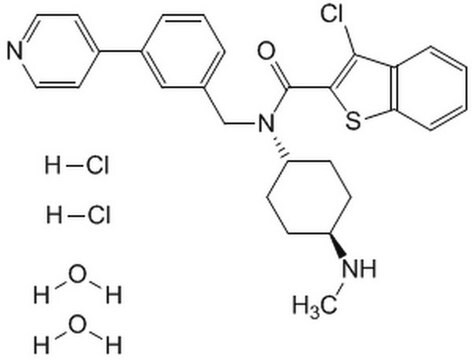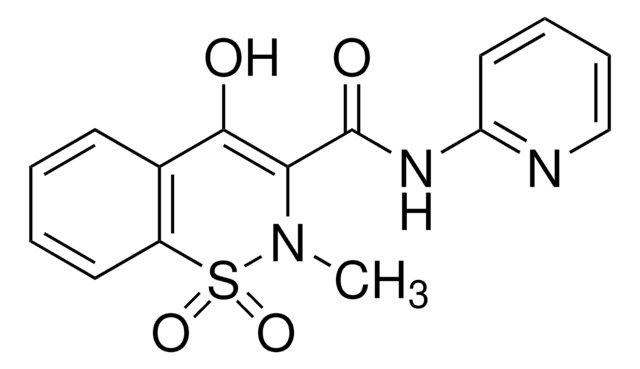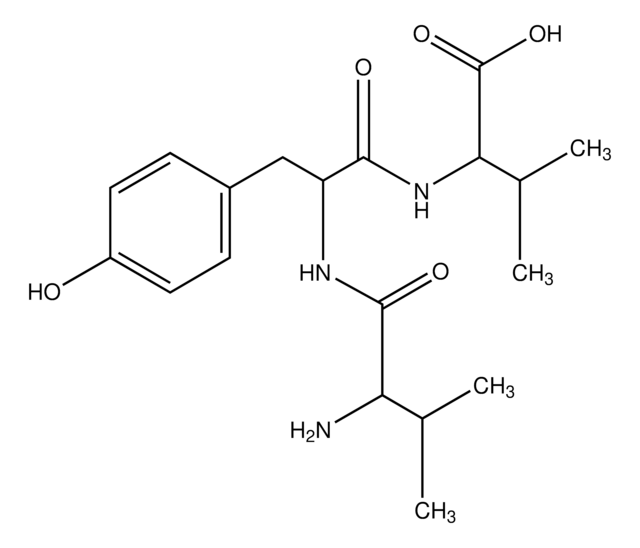SCP0145
Fibrinopeptide B human
Anmeldenzur Ansicht organisationsspezifischer und vertraglich vereinbarter Preise
Alle Fotos(1)
About This Item
Empirische Formel (Hill-System):
C66H93N19O25
Molekulargewicht:
1552.56
UNSPSC-Code:
12352202
NACRES:
NA.32
Empfohlene Produkte
Biologische Quelle
human
Assay
≥95% (HPLC)
Form
lyophilized
Zusammensetzung
Peptide Content, ≥75%
Lagerbedingungen
protect from light
Lagertemp.
−20°C
Amino Acid Sequence
Glp-Gly-Val-Asn-Asp-Asn-Glu-Glu-Gly-Phe-Phe-Ser-Ala-Arg
Anwendung
Pyroglutamated Fibrinopeptide B (Glp-Gly-Val-Asn-Asp-Asn-Glu-Glu-Gly-Phe-Phe-Ser-Ala-Arg) is related to Fibrinopeptide B (Gln-Gly-Val-Asn-Asp-Asn-Glu-Glu-Gly-Phe-Phe-Ser-Ala-Arg) derived from fibrinogen (desAA-fibrin) by thrombin activity.
Lagerklassenschlüssel
11 - Combustible Solids
WGK
WGK 3
Flammpunkt (°F)
Not applicable
Flammpunkt (°C)
Not applicable
Analysenzertifikate (COA)
Suchen Sie nach Analysenzertifikate (COA), indem Sie die Lot-/Chargennummer des Produkts eingeben. Lot- und Chargennummern sind auf dem Produktetikett hinter den Wörtern ‘Lot’ oder ‘Batch’ (Lot oder Charge) zu finden.
Besitzen Sie dieses Produkt bereits?
In der Dokumentenbibliothek finden Sie die Dokumentation zu den Produkten, die Sie kürzlich erworben haben.
W Ruf et al.
Biochimica et biophysica acta, 965(2-3), 169-175 (1988-05-12)
Thrombin preferentially cleaves fibrinopeptides A (FPA) from fibrinogen resulting in the formation of desAA-fibrin from which most of the fibrinopeptides B (FPB) are then released with an enhanced rate. Kinetics of fibrinopeptide release from normal and dysfunctional fibrinogens were investigated
Yutaka Masuda et al.
Peptides, 23(3), 409-411 (2002-02-12)
We detected a peptide having a behavioral activity on mouse forced swimming from sera of healthy volunteers without affective and psychotic diseases. The amino acid sequence was GVNDNEEGF, which was found in the sequence of human beta-fibrinogen. The synthesized peptide
Tomas Riedel et al.
Blood, 117(5), 1700-1706 (2010-11-26)
Fibrinogen adsorption on a surface results in the modification of its functional characteristics. Our previous studies revealed that fibrinogen adsorbs onto surfaces essentially in 2 different orientations depending on its concentration in the solution: "side-on" at low concentrations and "end-on"
Unser Team von Wissenschaftlern verfügt über Erfahrung in allen Forschungsbereichen einschließlich Life Science, Materialwissenschaften, chemischer Synthese, Chromatographie, Analytik und vielen mehr..
Setzen Sie sich mit dem technischen Dienst in Verbindung.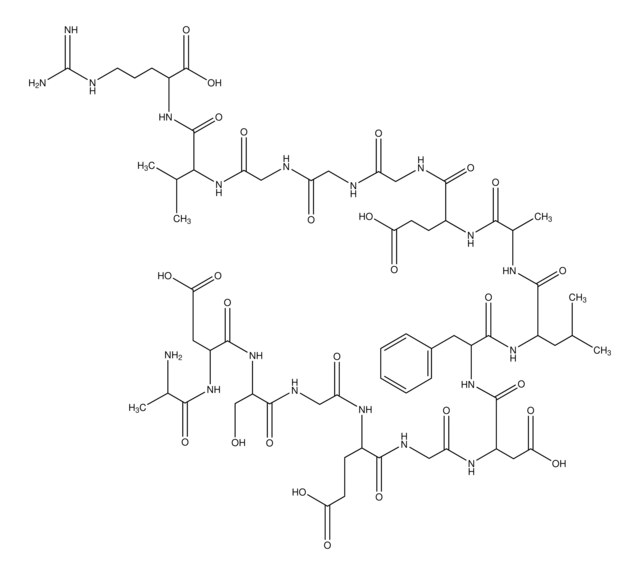
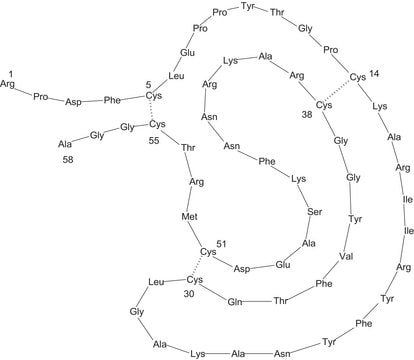
![[Glu1]-Fibrinopeptid B ≥90% (HPLC)](/deepweb/assets/sigmaaldrich/product/structures/122/537/7ead5c32-cb67-4325-9ce7-66c8dec24bdd/640/7ead5c32-cb67-4325-9ce7-66c8dec24bdd.png)
![[Tyr0]-Fibrinopeptide A human](/deepweb/assets/sigmaaldrich/product/images/150/102/03b083b5-a149-4f15-be65-e8832cce7318/640/03b083b5-a149-4f15-be65-e8832cce7318.jpg)

